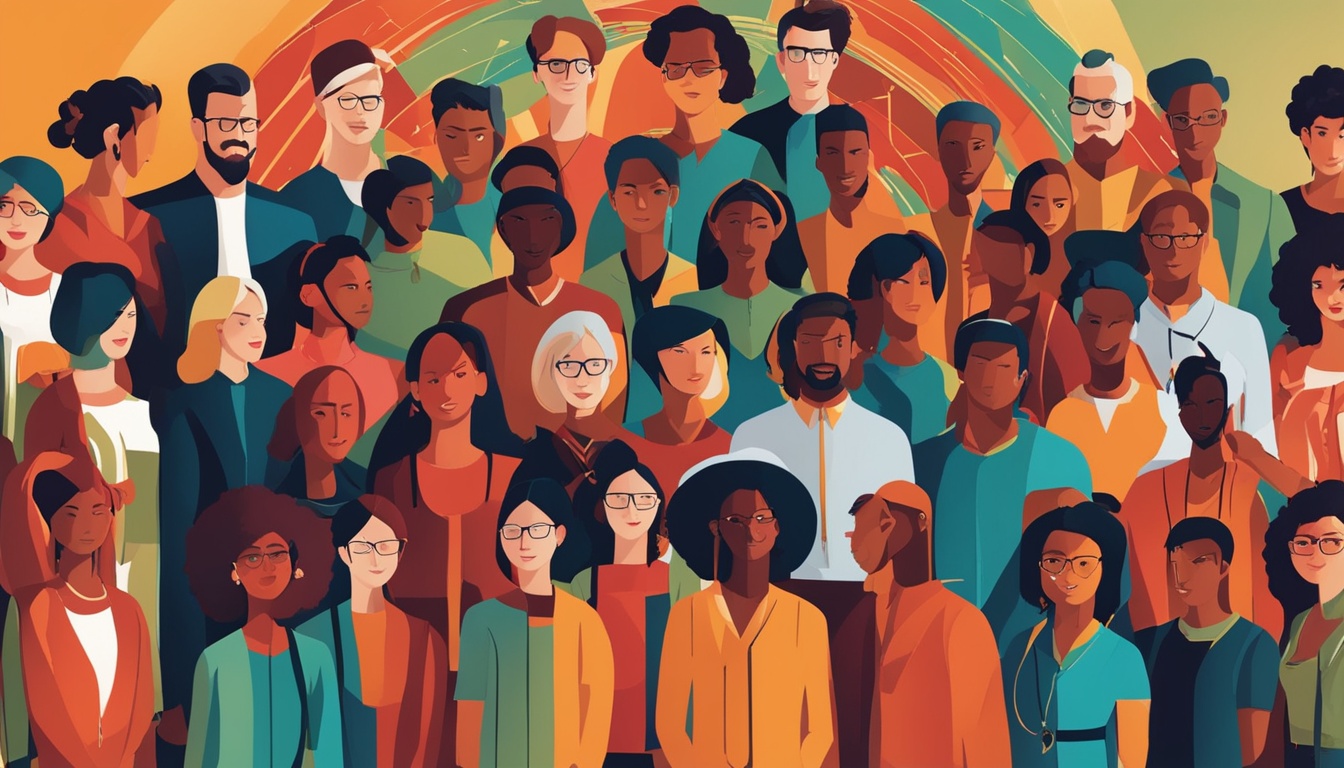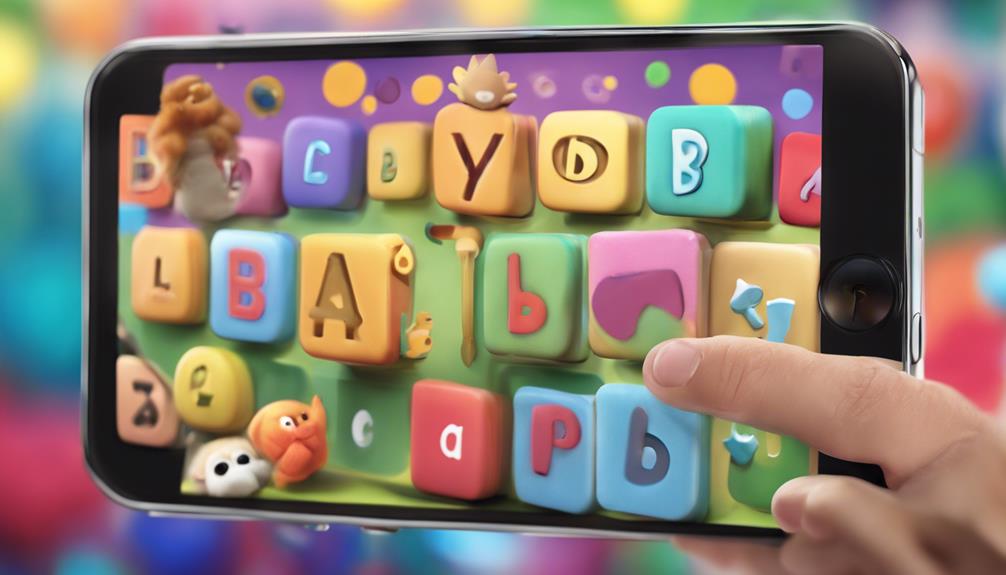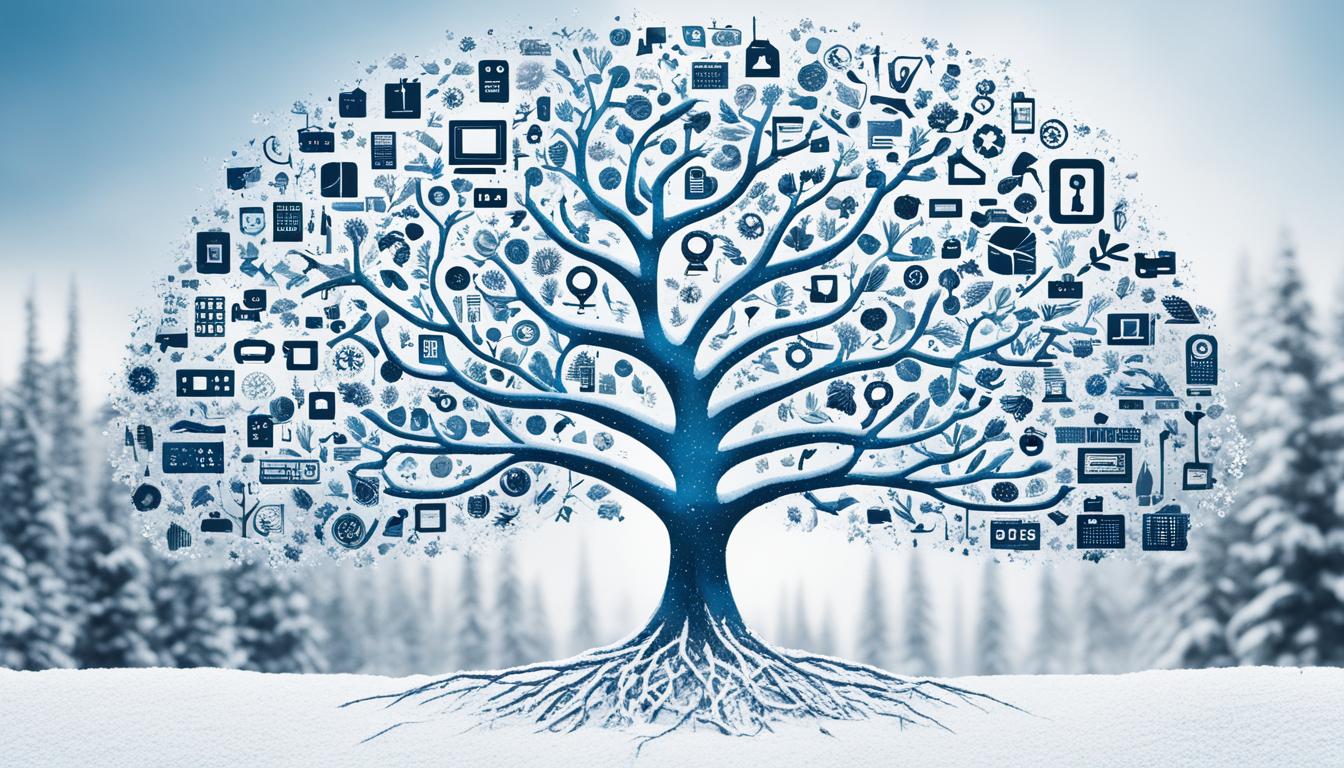Ever had trouble bonding with someone from a different culture? Their way of talking might’ve baffled you, or perhaps you misunderstood their body language. Trust me, it can be downright frustrating.
Communication is key in human interaction, yet it’s challenging. This is especially true with cultural differences. Our cultural backgrounds shape how we communicate and what we expect. To really connect, we must delve into these cultural perspectives.
Key Takeaways:
- Cultural perspectives greatly influence our communication and interactions.
- Understanding and adapting to diverse cultures boosts our communication skills.
- Exploring cultural perspectives helps us connect deeply with people from varied backgrounds.
- Being culturally sensitive leads to respectful and effective communication.
- Embracing cultural diversity makes our global society more inclusive and connected.
The Impact of Cultural Communication Styles
Different cultures have their own way of talking and interacting. It’s very important to understand these styles to communicate well across cultures.
Cultural communication styles include how loud we speak, how fast, and if we make eye contact. They also involve our facial expressions, how much emotion we show, and our comfort with sharing personal stories. These styles can be very different from one culture to another. Knowing these differences helps us avoid confusion and connect better with others.
In some cultures, looking someone in the eyes is respectful. In others, it’s seen as rude. The way we use silence in conversations also changes depending on the culture. Some see pauses as time to think, while others may feel uncomfortable.
In Japan, silence shows respect and gives others time to think. In America, it’s often seen as awkward, leading to small talk.
In terms of showing emotions, cultures vary too. Some are open with their feelings, while others keep emotions under control. Being aware of these differences avoids misunderstandings.
Formality also changes based on the culture. Some cultures prefer formal speaking and respect for social ranks. Others are more casual. Knowing what level of formality to use is key to communicating well.
Examples of Cultural Communication Styles
Let’s look at how cultural communication styles can differ:
| Communication Style | High-Context Cultures | Low-Context Cultures |
|---|---|---|
| Tone and Volume | Use a softer tone and lower volume for respect and harmony. | Use a louder tone and higher volume for enthusiasm and engagement. |
| Pace of Speech | Speak at a slower pace for reflection and thoughtful messages. | Speak at a faster pace, valuing quick and clear communication. |
| Eye Contact | May avoid eye contact to show humility and respect. | See direct eye contact as sincere and attentive. |
| Self-Disclosure | Prefer not to share personal info, focusing on group unity. | More open to sharing personal stories and thoughts. |
| Formality | Value formal speech and respect for ranks and hierarchy. | Prefer a casual approach in speaking and socializing. |
By understanding these communication style differences, we can adjust our way of talking. This makes our messages clear and respectful across different cultures. It helps us close the gap between cultures and build strong connections.
The Influence of Culture on Interpersonal Communication
Culture affects how we talk and share ideas with each other. It shapes how we interact. Knowing about this helps us connect better with people from different cultures.
Culture affects who can talk in a discussion. In some cultures, only certain people with higher status can speak freely. Others might not get as many chances to share their thoughts. Understanding and respecting these rules helps everyone get along.
Culture also decides when and where it’s okay to communicate. Some cultures have special places for talking, like meetings or public areas. Others might prefer private places for conversation. Knowing where to talk makes communication smoother.
Different cultures use body language in their own ways. This includes facial expressions, gestures, and how much eye contact is used. In some places, looking someone in the eyes is good. In others, it might be seen as rude. It’s important to understand these differences.
“Culture is the widening of the mind and of the spirit.” – Jawaharlal Nehru
How direct or formal our speech is can also vary by culture. Some cultures are very clear and straightforward when they talk. Others talk in more indirect ways, using context to explain. Knowing these differences helps us talk better with people from around the world.

Understanding culture’s role in conversation is key to strong connections. It lets us avoid confusion and respect each other more.
High and Low Context Cultures
Communication across different cultures depends heavily on context. It affects how messages are conveyed and understood. High-context and low-context cultures use different communication styles. Each style has its own special features.
In high-context cultures like those in Asia and the Middle East, communication isn’t just about words. It involves shared cultural understanding, hints, and body language. These cultures prefer indirect ways to share messages. The subtle signs and what’s left unsaid are key. For example, Japanese culture uses “honne” and “tatemae” to show the power of unspoken rules in conversations.
Low-context cultures, found mainly in Western places like the USA and Germany, like to keep communication clear and to the point. These cultures use words to make things crystal clear. They don’t rely much on nonverbal hints to get their message across. For them, being open and straightforward without hidden meanings is important.
In high-context cultures, communication resembles a complex dance with nonverbal cues. Low-context cultures favor a clear, direct talk.
Knowing the differences in these communication styles is critical. People from high-context cultures might think low-context ways are too blunt. And those from low-context places could find high-context methods vague or confusing.
To communicate well across cultures, it’s important to understand these differences. By knowing if a culture prefers direct words or subtle hints, we can talk in ways that connect better. This helps us bridge cultures and communicate more effectively.

The Importance of Cultural Sensitivity in Communication
Cultural sensitivity is crucial in effective communication. It helps us connect and understand each other better. Respecting and understanding cultural differences is key.
It means knowing about cultural details and adjusting how we talk. It’s about valuing diversity and knowing that good communication is more than just speaking the same language. This approach helps us respect and understand others more.
Cultural sensitivity helps us avoid misunderstandings. We can see things from different views. This makes our personal and work relationships stronger in our global society.
“Cultural sensitivity is the key to meaningful communication across cultures. It involves recognizing and respecting the unique values, beliefs, and practices of diverse cultural groups. By embracing cultural sensitivity, we create an environment that encourages effective and respectful communication.”
Benefits of Cultural Sensitivity in Communication
Being culturally sensitive in communication has many benefits:
- Increased understanding: We learn to appreciate the variety of human experiences, leading to a deeper insight into different cultures.
- Improved problem-solving: With many viewpoints and cultural methods, we find better and more creative answers to difficult issues.
- Enhanced relationships: Cultural sensitivity builds trust and respect. It helps us value each other’s differences and builds better connections.
- Global mindset: Being culturally sensitive broadens our view of the world. It helps us interact with diverse people respectfully.
Cultural sensitivity makes our communication stronger. It lets us form real connections, create meaningful relationships, and build a more inclusive world.
Cultural Sensitivity in Action
Imagine a team from different countries working together. Each person brings their own way of communicating and expecting. Without cultural sensitivity, this can lead to problems.
A culturally sensitive approach can solve these issues. It means really listening, trying to understand, and recognizing how cultural values shape communication. By adjusting how we communicate around different cultures, the team works better together. This uses everyone’s unique views for greater success.
To be more culturally sensitive, we must keep learning and growing. It starts with looking at ourselves and questioning our assumptions. Workshops, cultural exchanges, and new experiences can improve how we talk across cultures.
Benefits of Cultural Sensitivity in Communication
| Benefits | Description |
|---|---|
| Increased understanding | A deeper appreciation and comprehension of different cultures. |
| Improved problem-solving | Considering diverse perspectives for more effective solutions. |
| Enhanced relationships | Building trust, respect, and better interpersonal connections. |
| Global mindset | Expanding one’s worldview and navigating diverse contexts. |

Cultural Perspectives on Emotional Expressiveness
Cultural perspectives shape how we express emotions. Different cultures have their own ways of showing feelings. It’s key to understand these differences for good cross-cultural communication. Let’s look into how cultural norms influence the way people show emotions.
In some cultures, showing emotions is encouraged and valued. People in these places often express their feelings openly. They use words, body language, and facial expressions. This allows them to connect with others on a deeper emotional level.
However, some cultures see expressing emotions openly as inappropriate or uncomfortable. Here, people might be more reserved. They could use nonverbal cues or indirect ways to show how they feel. Keeping emotions in check and staying composed is often important, which leads to a more controlled way of showing feelings.
Knowing about these cultural differences in expressing emotions is crucial for good communication across cultures. It helps us understand and respect others’ emotional expressions. This way, we can avoid misunderstandings. By valuing these differences, we can empathize with others and form meaningful connections.

Impact on Communication
Cultural views on expressing emotions affect how we communicate. In cultures that value openness, you might see more emotions in conversations. People might share feelings and personal stories more freely. In cultures valuing restraint, discussions may center more on facts and practical things. Emotions might not be as openly expressed.
“Cultural views on expressing emotions shape our communication and how we understand feelings. It’s important to know that this isn’t the same everywhere. Different norms and beliefs guide how emotions are shown and understood.”
Recognizing and Adapting to Cultural Perspectives
To communicate well across cultures, we need to be aware of these different views on expressing emotions. Here are ways to navigate these differences successfully:
- Practice active listening: Focus on both words and the emotional cues shared through body language and nonverbal signals.
- Respect cultural norms: Adjust how you communicate to fit the cultural expectations around sharing emotions.
- Ask clarifying questions: If you’re unsure about the emotions being shown or discussed, politely ask for more information.
- Develop empathy: Try to understand where the other person is coming from and their cultural stance on emotions.
- Be patient and flexible: Building relationships across cultures takes time. Be ready to adapt to different norms and ways of communicating.
By valuing cultural diversity and learning about different ways of expressing emotions, we can communicate better across cultures.
Summary
Cultural perspectives deeply influence how we express emotions. Some cultures encourage sharing emotions, while others prefer keeping them in check. Understanding and respecting these differences is key to communicating well across cultures. By acknowledging and adapting to these variations, we can connect better and bridge cultural gaps.
| Cultural Perspectives on Emotional Expressiveness | Key Points |
|---|---|
| Encouraged Emotional Expressiveness | – Verbal and nonverbal expressions of emotions – Open sharing of personal feelings – Deep emotional connections |
| Emotional Restraint | – Indirect communication of emotions – Controlled approach to expressiveness – Less overtly displayed emotions |
| Tips for Effective Cross-Cultural Communication | – Active listening and observing – Respecting cultural norms – Seeking clarification if needed – Developing empathy – Being patient and flexible |
Communication Challenges in a Globalized World
In today’s world, talking to people from different cultures is common. But, this comes with its challenges. These issues can make talking effectively harder because of language barriers, cultural misunderstandings, and different ways people expect to communicate.
Global language diversity can make clear talk tough. We must overcome these language obstacles for better cross-cultural chats. Often, using local sayings or complex language confuses others. It’s best to speak simply and clearly, avoiding tricky phrases.
“Effective cross-cultural communication requires a conscious effort to bridge the language gap and ensure mutual understanding.”
Different cultural backgrounds mean different communication styles. This can lead to wrong interpretations or judgments about what someone means. Recognizing and appreciating these differences helps avoid misunderstandings and promotes better dialogue.
Expectations in communication also vary across cultures. Some cultures like being straightforward, while others prefer subtlety. Understanding and adapting to these preferences is key. It helps prevent us from seeming impolite or aggressive.
The Impact of Communication Challenges
Ignoring communication barriers can damage relationships, collaboration, and business chances. Misunderstandings can break trust, leading to failure. Thus, it’s important to tackle these issues to improve cross-cultural talks.
| Communication Challenges | Impact |
|---|---|
| Language Barriers | Limits understanding and clarity |
| Cultural Misunderstandings | Creates tension and misinterpretations |
| Differing Communication Expectations | Impacts rapport and relationship-building |
To overcome these challenges, being sensitive to other cultures, listening well, and being adaptable are crucial. By exchanging cultural insights, asking for explanations, and showing empathy, we can get past these hurdles. This leads to effective communication worldwide.

Addressing these global communication challenges helps us get better at talking across cultures. Stronger connections and new chances come from continuous effort and understanding different cultures. By doing so, we bridge gaps, promote understanding, and handle the complex nature of global communication.
Enhancing Cross-Cultural Communication Skills
Learning how to communicate across cultures is key in today’s world. It involves listening well, understanding others, being open, adapting, and showing flexibility. These are needed to respect cultural differences.
Cross-cultural communication skills include:
- Active Listening: Really listening to catch not just the words but also feelings, beliefs, and ideas behind them.
- Empathy: Imagining oneself in another’s position. Trying to grasp their thoughts and feelings without bias.
- Open-mindedness: Being willing to learn from others, putting aside your judgments, and appreciating different cultural practices.
- Flexibility: Changing how you communicate, like the words you choose or your gestures, to match others’ cultural expectations.
- Continued Learning and Practice: Knowing that learning about cultures never stops and seeking more knowledge and experiences.
Improving these skills helps close cultural gaps. This leads to deeper connections and better communication with people from various backgrounds.
Cross-Cultural Communication Skills in Action
In Japan, British diplomat Edward Alden showed great cross-cultural communication. He adjusted his way of talking to fit Japanese culture. He understood their customs and unspoken rules. This helped him earn trust and succeed in his diplomatic work.
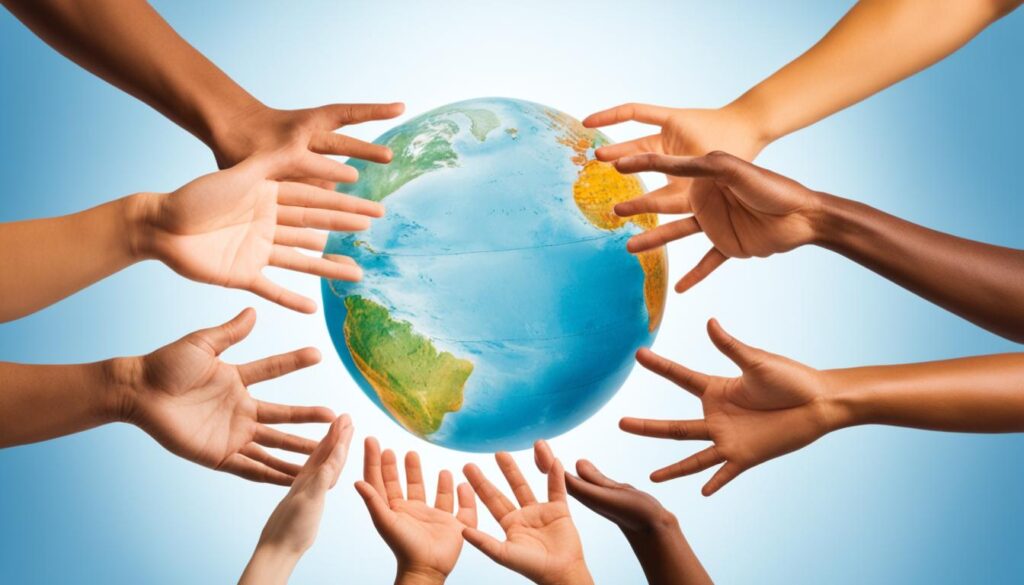
| Benefits of Enhancing Cross-Cultural Communication Skills | How It Enhances Communication |
|---|---|
| Increase Understanding | Building these skills makes us truly appreciate and get different ways of communication and viewpoints. |
| Promote Respect and Inclusivity | Developing these skills leads to valuing everyone. It encourages empathy and working well together. |
| Improve Collaboration and Problem-Solving | Good communication across cultures makes teams work better. They use their diverse views to tackle challenges. |
| Strengthen Relationships | Better cross-cultural skills create trust. They make communication open and strengthen bonds across cultures. |
| Facilitate Global Mindset | Communicating well with different cultures gives us a global perspective. It helps us adjust and understand in diverse settings. |
Keeping at it and getting better at communicating across cultures is crucial. By valuing diversity and improving these skills, we make connections that go beyond cultural lines.
Benefits of Culturally Diverse Communication
Talking with people from different cultures has many benefits. It helps us grow personally, professionally, and as a society. We understand other cultures better, which makes us more empathetic and open to different views.
One big plus is learning new things. By meeting people with different backgrounds, we see new perspectives, values, and beliefs. This helps us be more inclusive and breaks down stereotypes.
“Diverse communication allows us to challenge our own assumptions and expand our horizons. It opens our minds to new ideas and ways of approaching various situations.” – Dr. Maria Johnson, Cultural Anthropologist
Talking with folks from various cultures also makes us better problem solvers. Different viewpoints offer new solutions to tough issues. This teamwork leads to more innovation, creativity, and critical thinking.
Another gain is seeing the world more globally. By interacting with diverse cultures, we think more broadly. We learn that many ways of seeing the world are valid. This global view helps us deal with cultural differences better.
Respecting each other is key in diverse communication. By talking openly and with respect, we make everyone feel included and important. This respect builds strong bonds and encourages teamwork worldwide.
By welcoming cultural diversity in our talks, we make our relationships richer. We also help create a world where everyone’s views are valued. Diverse communication brings us closer and helps us understand each other better.
The Benefits of Culturally Diverse Communication at a Glance:
| Benefits | Description |
|---|---|
| Increased Understanding | Engaging with diverse cultures promotes a deeper understanding of different perspectives, values, and beliefs. |
| Appreciation of Different Perspectives | Culturally diverse communication broadens our mindset, fostering empathy and respect for alternative ways of thinking. |
| Improved Problem-Solving Skills | Diverse perspectives contribute fresh insights and alternative solutions to complex problems, driving innovation and critical thinking. |
| Development of a Global Mindset | Engaging with diverse cultures nurtures a global perspective, facilitating effective cross-cultural communication and adaptation. |
| Mutual Respect | Respectful and open-minded communication across cultures creates an inclusive environment where individuals feel valued. |

In summary, diverse communication has many advantages. It helps us understand and appreciate different cultures. It improves our ability to solve problems and see the world in new ways. By being open to diversity, we make our world more connected and respectful. It’s all about bringing people together and letting everyone thrive, no matter where they come from.
The Role of Cultural Perspectives in a Globalized Society
Cultural perspectives shape how we talk and connect in our global society. Understanding and valuing these views help us work together better. This breaks down walls, promotes inclusivity, and brings harmony. Cultural insights guide our interactions, making the world more connected.
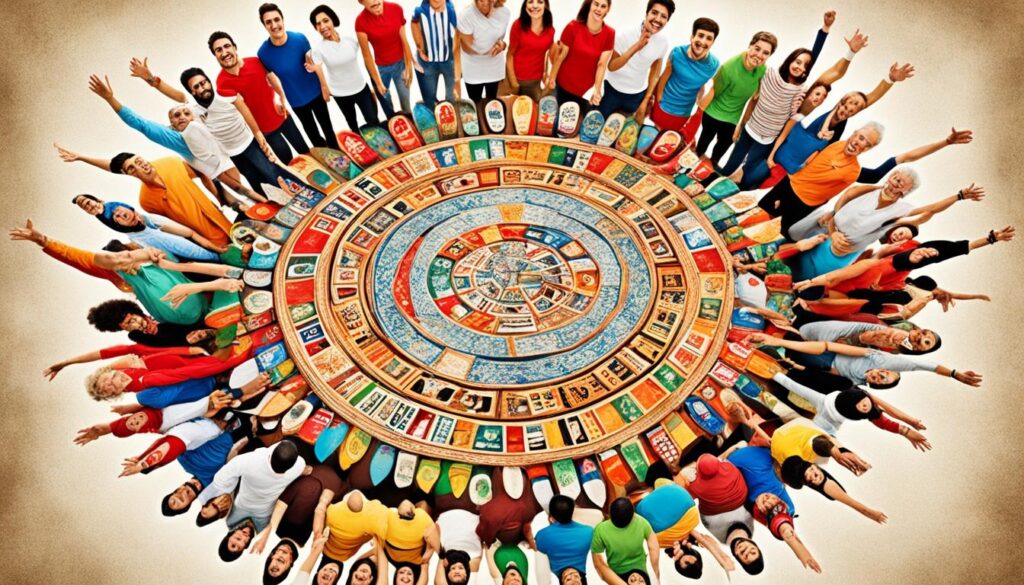
In our world today, cultural views are crucial in how we see and connect with others. Meeting people from other cultures means we must understand the impact of these perspectives on our communication. This helps us create strong bonds, build understanding, and foster unity.
“Understanding cultural perspectives opens up a world full of new experiences and insights. It helps us move past our biases, truly connecting with others in a meaningful way.” – John Smith, Cultural Anthropologist
Cultural perspectives come from history, values, beliefs, traditions, and social rules. They influence how we see and use communication signals, like body language and tone. Respecting these perspectives helps us cross communication barriers. This makes cross-cultural talking inclusive and effective.
The Impact of Cultural Perspectives on Communication
Cultural perspectives can really change how we talk and understand each other. Cultures vary in their communication, from direct to indirect ways of speaking. Knowing these differences lets us adjust how we talk. This improves understanding across cultures.
- Cultures differ in verbal and non-verbal communication, like gestures and eye contact.
- Some cultures hint at meanings while others say things straight out.
- Views on time and being on time also vary widely among cultures.
- Getting cultural perspectives can guide us in power dynamics and hierarchies in conversations.
Respecting cultural perspectives makes our communication better and more meaningful. It builds bridges of understanding, leading to a peaceful global community.
Conclusion
Cultural views heavily influence how we talk and interact with others. They shape our communication styles and how we show feelings. Understanding cultural differences helps us connect better and makes the world more united. By learning about cultural views of communication, we can build strong and meaningful relationships.
Knowing how culture changes communication is key to connecting with people from other places. It lets us explore new ways of sharing thoughts. Being aware of cultural differences means we can adjust how we speak. We can use the right words and actions to share our ideas clearly.
Also, appreciating cultural differences is good for friendships and working together. When we respect various cultures, we encourage new ideas and solutions. This way of including everyone leads to better teamwork. It strengthens connections between people, making the world friendlier and more connected.

